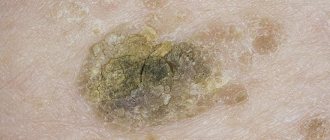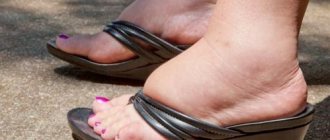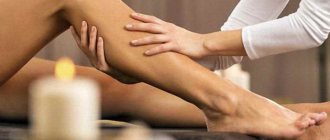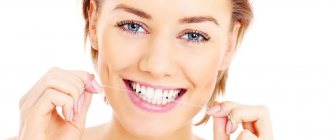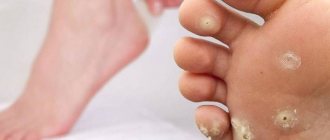How to cure otitis media at home without causing harm
Treatment of otitis media
I would like to immediately note that if signs of otitis appear, you should in any case (even if you are going to be treated at home) consult a doctor. The fact is that each type of disease and each of its stages requires its own approach. After passing a simple examination, the specialist will tell you what will help in your case.
Remember that otitis media goes through three stages. The first, which is called catarrhal or preperforative, is characterized by pain and noise in the ear, a feeling of fullness and a gradual decrease in hearing. This happens due to inflammation, swelling and accumulation of exudate in the tympanic cavity. There are also symptoms of body intoxication: elevated body temperature (38-39ᵒC), headache, lethargy, drowsiness.
The second stage is exudative or perforative. At this time, the eardrum is perforated and exudate (purulent or serous) comes out of the ear; the patient may notice discharge in the ear canal. The symptoms gradually subside and otitis media moves into the recovery (reparative) stage.
You should be wary of:
- long-term course of the disease (more than 3 weeks);
- severe hearing loss;
- presence of discharge after recovery;
- the occurrence of dizziness and vomiting, which may be a sign of meningitis.
If during treatment at home you notice such deviations in yourself, you should immediately contact a specialist. In another situation, you can carry out therapy yourself.
How to treat otitis media at home? There are compresses, heating, ear drops, decoctions and tinctures. Before starting treatment, determine what phase the disease is in.
Do not carry out procedures unless you are sure that they will not harm you. If you notice any worsening effects (such as increased pain, inflammation, or an allergic reaction) from any medication, you should stop using it immediately.
Do not take medications without consulting a doctor.
conclusions
Although in simple cases treatment of otitis media is acceptable at home, if it is at a fairly advanced stage, then you should forget about self-medication. You should also forget about it in case of internal otitis, which is the most dangerous and simply cannot be treated well on its own. Be sure to contact your doctor, who will assess the situation and allow you to choose the most appropriate approaches to therapy that will eliminate the problem as quickly and effectively as possible, restoring the child’s health. This is especially true if otitis media is detected in an infant.
First aid for ear pain
At the first stage of the disease, a person suffers from severe shooting pains in the ears, noise and congestion.
How to alleviate suffering until the moment when it is possible to visit a doctor?
- In the first stage, you can use ear drops for ear pain, such as Otipax, Otizol or Otinum. Otipax contains phenazole and lidocaine, Otizol contains antipyrine, phenylephrine hydrochloride and benzocaine. This combination has a powerful analgesic effect and also helps relieve inflammation. Drops for ear pain Otinum, with the active ingredient choline salicylate, have a similar effect.
- Take tablets Analgin, Nurofen (Ibuprofen), Acetylsalicylic acid, Paracetamol. They not only relieve pain, but also have an antipyretic and anti-inflammatory effect. If you have viral otitis, then Fervex powder is indicated. This powder is sold without a prescription. For severe pain, you can take Paracetamol or Nurofen up to 4 times a day.
- For pain relief at home, boric alcohol is suitable, which is also an excellent antiseptic drug. It is instilled into the ear or tampons soaked in boric alcohol are placed overnight.
- One of the types of treatment for otitis with folk remedies is drops with propolis. Its tincture is sold in pharmacies. It will help relieve pain and inflammation and has bactericidal properties. To make drops, you need to dilute 10 drops of tincture and 50 ml of water. Place 3 drops of propolis in your ears, 3 times a day.
- To eliminate pain, calendula tincture, which is freely available in pharmacies, is suitable. This plant has anti-inflammatory, wound-healing, soothing and disinfecting properties. It destroys bacteria (in particular cocci, which often cause otitis media). To prepare drops from calendula tincture in the ear, you need to dilute 10 ml of medicine and 100 ml of water. Apply 2-3 drops, three times a day. You can also use cotton swabs soaked in this solution overnight.
- Instill furacilin alcohol 2-3 drops, 3 times a day. After instillation, close the ear canal with cotton wool and lie on your side. You can put turundas soaked in this medicine in your ear. Keep them for no more than half an hour. Furacilin kills pathogenic bacteria (streptococci, staphylococci), viruses and fungi, and also eliminates pain. It is even allowed to drip furacilin alcohol into the ear of a child and pregnant women. It is indicated for furunculosis and otitis media of the middle ear.
Is it possible to drip hydrogen peroxide into the ear for pain? Peroxide really helps reduce pain. It is allowed to be used for external and otitis media even at the stage of suppuration, but this should not be done often. To avoid irritation of the middle ear mucosa, slightly dilute 3% peroxide with water (15 drops per 1 tablespoon of water).
Types of otitis
Depending on the location of the site of inflammation, otolaryngologists distinguish three types of otitis: internal, external and medial.
Internal otitis
Internal otitis. Symptoms
Internal otitis occurs as a result of neglect of the treatment of the inflammatory process in the middle ear. It is characterized by severe pain and is almost always accompanied by dizziness and vomiting. The patient experiences hearing loss, and complete hearing loss may occur.
Otitis media
Often, otitis media occurs as a complication after an infectious or viral disease, such as tonsillitis or influenza. This disease is quite severe: continuous pain is felt in the form of pulsation or sharp outbreaks. The patient loses the ability to hear, body temperature rises, and colorless or yellow liquid is released from the ear canal.
Schematic representation of otitis media
The common cold often causes otitis media. As the infection spreads, it ends up in the Eustachian tubes, where it penetrates from the nasal sinuses. The Eustachian tubes are designed to equalize pressure, but the inflammatory process causes swelling, and this function is impaired. Soon the surface of the middle ear mucosa becomes infected and gives rise to an acute inflammatory process. The pressure near the eardrum also decreases, causing effusion to form in the middle ear.
Otitis media certainly requires medical attention, but treatment can be started immediately using home remedies.
Video: Otitis media
Otitis externa
Perhaps, everyone has encountered manifestations of external otitis at least once in their life: itching, pain of varying intensity both in the organ itself and in nearby tissues, purulent discharge, swelling. The cause of infection and the occurrence of external otitis may be needles, knitting needles, toothpicks, which are used to clean the ear canal. They create microtraumas, microcracks through which pathogenic bacteria easily penetrate.
Image of otitis externa
Experts distinguish two types of external otitis – limited and diffuse.
- Limited otitis. Weakened immunity can provoke the occurrence of limited otitis media. It develops as a result of inflammation of the hair follicle bursa or the maturation of a boil. Visually, the process is quite clear: inflammation is localized, and the lymph nodes located near the ears are significantly enlarged.
Acute external otitis
- Diffuse otitis. Diffuse otitis media is bacterial, allergic or fungal in nature. This type of otitis affects the entire ear canal. The infection penetrates the upper layer of the ear canal through various lesions. With diffuse otitis media, itching is felt inside the ear canal, body temperature rises, the ear becomes red, and in some cases, pus with a pungent odor is released.
External diffuse otitis
Treatment of otitis externa requires seeking qualified medical help, but it is quite possible to begin treatment at home.
Treating otitis at home with compresses
Warm compresses can also help relieve pain. Their effect is based on maintaining heat in the desired area of the body, under the influence of which pain subsides. Metabolic processes and tissue regeneration also accelerate, blood begins to circulate faster, vascular permeability decreases, and bacteria are inactivated. When using compresses, medications penetrate the skin better and healing occurs faster.
How to make a compress on the ear:
- Prepare a cotton gauze napkin or a suitable piece of cotton fabric (do not use synthetics), folded in 3-4 layers. Make a cut in the middle for the ear;
- moisten a napkin in a preheated medicine, lie on your side and put it on your ear so that the fabric fits tightly to the area behind the ear;
- Place a plastic bag or compress paper with the same slot in the middle over your ear. You can insert a cotton swab with medicine into the ear canal;
- cover the entire ear with a large piece of cotton wool and wrap it with a headband, for which a woolen scarf or handkerchief is suitable.
Wet compress
What to make a wet compress from:
- alcohol or vodka. A vodka compress on the ear will help relieve pain, inflammation and speed up the healing process. Remember the rule: you can apply an alcohol compress only to the area behind the ear. How to make a compress on the ear from vodka? Dilute the alcohol with water in an equal ratio (if you use vodka, then there is no need to dilute it), moisten the prepared napkin in it and leave the compress for 5-8 hours until it cools down. Do the procedures until symptoms subside (5-15 times);
- Castor oil. This is a natural product that has antiseptic, bactericidal, anti-inflammatory and wound healing properties. In addition, it has a detrimental effect on fungal infections. Castor oil for the ears will be useful for external and otitis media, as well as eustachitis. It can relieve pain and inflammation, speed up the healing process at the reparative stage, but it cannot be used for suppuration. Castor oil for ears (use): this wonderful remedy is used as drops, turundas and compresses, which are left overnight;
- propolis tincture (relieves pain and inflammation, disinfects). Soak a tube of cotton wool and a bandage in it and insert it into the ear canal and leave it overnight. Carry out procedures within 2 weeks;
- camphor oil. Camphor oil for otitis will help eliminate the unpleasant symptoms of this disease. Some people advise putting it in the ear or using tampons, but a compress helps best. Do it at night, but if you use camphor alcohol, then the compress should be removed after 2 hours;
- herbal decoction . You will need 3 tbsp. sweet clover, chamomile and basil. Pour boiling water over these herbs and leave for half an hour, then strain. Moisten a gauze cloth in the broth and make a compress according to the instructions given above.
Important! After removing the compress (dry or wet), it is recommended not to go outside for an hour.
What traditional methods of treating otitis media can be harmful?
All methods of traditional medicine can be harmful if they are considered a panacea for most otolaryngological diseases.
To avoid consequences after self-treatment, exclude:
- Taking antibacterial drugs. The doctor should select antibiotics based on information about the causative agent of the infection. Otherwise, they will be ineffective, and when using drops, a person runs the risk of encountering the toxic effects of such drugs on the body.
- Warming up. They are acceptable when the inflammation has been stopped, but if this has not yet happened, heat will promote the active growth and reproduction of pathogenic bacteria. Warming up can lead to traumatic injuries and cause burns.
- The use of radical methods for the treatment of otitis. You should not experiment, risk your health, such treatment is hardly safe and may result in hospitalization in a burn or intensive care unit.
It is worth cautioning against the use of aggressive antiseptics. So the decision to make a compress from alcohol or drop it into the ear can be reckless. In the case of a purulent form of the disease, the compress will cause a breakthrough of the abscess, and in an acute form, it will burn the skin of the ear canal.
You should not try to cure the disease yourself if it progresses despite the measures taken. In this case, qualified medical assistance is required.
Warming the ear (dry heat)
Warming up with dry heat has the same effect as wet compresses. For example, you can warm your ear with salt or a special lamp.
Use ordinary table salt. It is preheated to a temperature of 40-50ᵒC. How to warm your ear with salt? Pour the heated product into a cotton bag (or mitten) and apply to the sore spot for about 15 minutes until the salt has cooled. Repeat manipulations 3 times a day. Please note that the temperature of the salt should not be too high, as this can be harmful!
Warming up
Warm sea salt, sand, flax seeds, a boiled egg, and a heating pad with water are suitable for warming with dry heat. They are also wrapped in cloth and applied to the ear. The pain after such techniques partially goes away after the first time. The duration of the course is 3-4 days.
Is it possible to warm the ear with otitis media with a blue lamp? It can be used at the catarrhal stage of the disease. Warming up time is 10-20 minutes. Do them up to 4 times a day for a week.
The blue lamp uses infrared radiation. The blue color of the glass is only necessary so as not to irritate the eyes. During the procedure, the lamp should be at such a distance that there is no discomfort or burning sensation (from 20 to 50 cm), the eyes should be closed. A lamp for warming up the ear has the following contraindications: pregnancy, ear tumors, furunculosis, pathologies of the cardiovascular system, inflammation of the lymph nodes.
Compresses (dry and wet) cannot be applied if there is damage to the eardrum, wounds or dermatitis, as well as with elevated body temperature and purulent otitis media. Warming up at the exudative stage can lead to the spread of infection and damage to the inner ear!
Ointments to combat otitis externa
Otitis ointment is considered effective and most used for this disease. The drugs are easy to use and have virtually no contraindications or side effects.
"Sofradex". Eliminates inflammatory processes, destroys bacteria and viruses, and has an antiallergic effect.
Levomekol. Levomekol ointment for otitis has also proven itself well. The drug includes methyluracil salt (responsible for tissue regeneration, fights viruses and infections), ethylene glycol (provides absorbent properties) and chloramphenicol (an antibiotic that kills pathogenic bacteria).
Levomekol is placed in the ear for otitis every day. The course of treatment is 7-11 days. The product is applied to the turunda and placed in the ear canal for 11-14 hours.
Vishnevsky ointment is also actively used for ear otitis. The medicine is intended to eliminate pain and inflammatory processes. The ointment is placed in the ear using a cotton swab for 2-3 hours.
Tetracycline ointment for otitis externa is used to heal inflammatory areas and kill bacteria.
Ear drops: their types and rules of use
Firstly, before instillation, you need to warm the drops to room temperature to avoid hypothermia and discomfort in the ears. You can do this by simply holding the bottle in your hand or putting it in hot water for a while.
How to bury your ears correctly? Before use, check the expiration date of the medicine. If the bottle does not have a special device, take a clean pipette and draw the medicine into it. Sit down, bend your head so that the sore ear is on top. You can also lie on your side. Pull back the ear a little to open the ear canal and apply the drops. Keep your head in this position for a few more minutes.
Put drops in your ears
How to properly instill an alcohol solution of boric acid into the ear? First you need to clean your ears with hydrogen peroxide: tilt your head (or lie on your side), drip 5 drops of peroxide and wait 10 minutes. Then tilt your head in the opposite direction so that all the liquid flows out, and wipe the ear canal with a cotton swab. After this, drip boric alcohol into the ear (3 drops), lie down for another 10 minutes and cover the ear with cotton wool. You can use gauze swabs soaked in 3% boric acid overnight. The duration of treatment should not exceed 7 days.
Hydrogen peroxide can be instilled into the ear before using any other means to wash away wax and dirt. This will enhance the effectiveness of the medications. There are also special drops for cleaning human ears and removing wax plugs, for example, Vaxol or Remo-Vax. Vaxol is based on pharmaceutical olive oil, and Remo-Vax contains a whole series of useful substances: allantoin, phenylethanol, mink oil, butylated hydroxytoulene and benzethonium chloride. These components soften wax plugs, which cause ear congestion, and dead epidermal cells, narrow pores and destroy bacteria. There are no antibiotics in these drops, so they are safe.
What other ear drops help with ear congestion? This symptom is usually caused by the presence of infection, the development of inflammation or allergic swelling. Anti-inflammatory ear drops Candibiotic and Sofradex, which contain glucocorticosteroids (beclomethasone dipropionate and dexamethasone), work well with them. But you need to be careful with these medications, as they contain antibiotics. Also, to eliminate congestion, vasoconstrictor drugs for the nose (Sanorin, Nazorin, etc.) are used, which restore breathing and patency of the auditory tube, as a result of which the pressure in the tympanic cavity is normalized.
The popular chloramphenicol alcohol in the ear contains chloramphenicol, a broad-spectrum antibiotic. It also contains ethyl alcohol and salicylic acid, thanks to which Levomycetin has a drying, antiseptic effect.
Attention! It is not recommended to use drops that contain antibiotics without a doctor's prescription.
Ear ointment for otitis media
Another remedy for treating otitis at home is ointments. They are effective for external and diffuse otitis media.
- Levomekol ointment. Contains the antibiotic chloramphenicol, which is active against many bacteria, as well as methyluracil, an immunomodulatory substance (affects the healing process and relieves inflammation).
- Ear ointment for otitis "Sofradex". It also contains antibiotics - neomycin and gramicidin. Sofradex also contains dexamethasone, which helps relieve inflammation and allergic reactions (itching, redness, swelling).
- Vishnevsky ointment. This drug contains only natural ingredients (birch tar, castor oil and xeroform), so it has no side effects. It will help relieve pain, inflammation, heal wounds and kill bacteria. It is recommended to make compresses with Vishnevsky ointment: insert a cotton swab dipped in the ointment into the ear canal and hold until it dries.
- Triderm. Active ingredients: betamethasone dipropionate, clotrimazole, gentamicin sulfate. Triderm is an antibacterial, antifungal and anti-inflammatory ointment.
You can prepare a medicinal ointment with your own hands from propolis. To do this you will need a piece of bee glue (15g) and butter (100g). Grate the propolis and melt the butter in a water bath. Without removing the oil from the heat, add propolis and cook for 30 minutes, stirring occasionally. You should get a homogeneous mass, which then needs to be strained and left to cool in the refrigerator.
It is recommended to apply the ointment in a thin layer, morning and evening. Use no longer than 2 weeks.
Prevention measures
Preventive measures include all factors that influence the enhancement of immunity. As is known, otitis media is provoked by concomitant pathologies. For this reason, you should first avoid colds. It is necessary to treat a runny nose in time and begin treatment for colds in a timely manner. The main rule of prevention is to avoid hypothermia. If hypothermia occurs, take a hot bath as soon as possible.
Otitis: treatment at home with folk remedies
Treatment with folk remedies
If drops for some reason are not available or are contraindicated, then you can use folk remedies for ear pain and other unpleasant symptoms of otitis media.
For example: pain-relieving compress
To prepare it you will need:
- 1 liter of clean water;
- 1 tbsp. rock salt;
- 10 g camphor oil;
- 100 g of ammonia (10%).
Preparation: Dilute salts in water. Mix oil with alcohol. Combine the ingredients and shake thoroughly (until the white flakes disappear). Moisten a gauze flagellum in the resulting liquid and insert it into the ear canal overnight.
A handy remedy for the symptoms of ear inflammation, which everyone has in the house, is onions. It is known for its antibacterial, analgesic and anti-inflammatory properties. You can put onion juice in your ears or put a tampon with onions overnight. The first remedy is more effective for otitis media of the middle ear, and the second for damage to the outer ear.
How to properly squeeze juice from onion for drips? The onion is pre-baked in the oven for 15 minutes. If you are worried about tinnitus, then before baking, cut a hole in the onion and pour a pinch of cumin into it. After the vegetable has cooled, you can manually squeeze the juice out of it into a plate or jar. Instill it in its pure form, 4 drops each, into the sore ear. The analgesic effect occurs within 1-2 hours.
You can simply grate the onion and strain the juice through cheesecloth. A cotton wool or bandage soaked in it is inserted into the ear canal overnight. Treatment with onions not only relieves the symptoms of otitis media, but also helps cure a runny nose.
Hearing problems after otitis media are treated with drops of onion juice and vodka. These components are mixed one to one and 1 drop is dripped into each ear for 10 days.
Here are some more traditional medicines:
- propolis. How to treat ears with propolis? In addition to drops, you can make compresses and ointment from propolis;
- beet. To relieve pain from otitis media, juice from this vegetable is used. To get it, you need to grate the vegetable and squeeze the pulp through cheesecloth. Drip the resulting liquid 3 drops three times a day. The juice should be warm;
- mint essential oil. Dilute 5-10 drops of oil with 30 ml of water (half a glass). Twist a cotton ball and soak it in the resulting liquid. Place the flagellum in the ear and wrap it with a warm scarf.;
- garlic oil. This remedy is prepared in advance: crush 2 medium-sized heads of garlic in a mortar, put in a jar and pour in half a glass of vegetable oil. Close the jar and leave to infuse for 10 days, then strain and use as drops. At the same time, you can take 1 tsp of oil orally. 3 times a day after meals.
It is worth noting! Treatment of otitis media with folk remedies at home is mandatory and must be combined with drug treatment.
For a speedy recovery, therapy should be comprehensive and include, along with drops, herbal decoctions and compresses:
- regular careful cleansing of the ear canal from secretions;
- restoration of normal breathing;
- treatment of diseases associated with otitis (viral infections, inflammation of the upper respiratory tract);
- strengthening the body's own defenses;
- bed rest.


